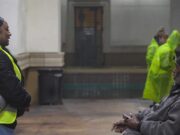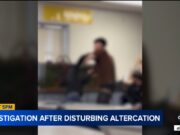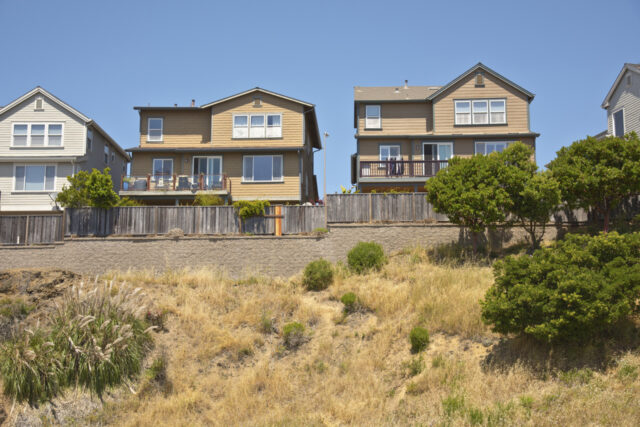By Edward Henderson | California Black Media
Legislation could go into effect by the end of this year, changing the way Californians landscape their homes.
In 2020, California enacted Assembly Bill 3074, mandating property owners to create an “ember-resistant zone” — referred to as “Zone 0” — within five feet of homes in designated high fire hazard areas. The legislation aims to reduce the risk of homes igniting from wind-driven embers during wildfires, a leading cause of structural fires.
However, many homeowners across the state — like Oakland Resident Tina Sanders — have not yet heard about the pending rules and have not begun making plans or saving money to be able to comply with it should the new safety rules go into effect soon
“I don’t know much about the Zone 0 law, but I think that the state should provide more information about it and help people prepare for this sudden change,” Sanders told CBM.
“I understand why it needs to happen, but people who aren’t aware or can’t afford to make these changes deserve assistance,” she added.
Other homeowners are worried that following Zone 0 rules could negatively impact the curb appeal of their homes, affecting their property values.
When Gov. Gavin Newsom issued Executive Order N-18-25 in February, he directed the State Board of Forestry and Fire Protection to expedite the adoption of Zone 0 regulations.
“We are living in a new reality of extremes. Believe the science – and your own damn eyes: Mother Nature is changing the way we live, and we must continue adapting to those changes,”
Newsom continued, “California’s resilience means we will keep updating our standards in the most fire-prone areas.”
Despite the law’s passage in 2020, implementation has faced delays. Originally set to take effect in 2023, the regulations have not been finalized, leaving many homeowners uncertain about compliance requirements.
While compliance with the Zone 0 regulations is currently recommended but not mandatory, the fire department has already completed nearly 6,000 inspections, identifying over 1,900 violations of existing fire safety regulations.
In some cities like Berkeley, for example, the local government is already providing guidance to homeowners on how they can fireproof their homes.
“You are responsible for keeping your property safe,” Berkeley’s website reminds residents.
“The first 5 feet around your home is the most important area to clear of vegetation and combustible materials since it is closest to buildings, structures, and decks,” the messaging on the website goes on. “In the Ember-Resistant Zone, dead vegetation creates the highest risk for ignition, but even living vegetation can pose a threat in Ignition Zone 0, especially for properties in the hills.”
CAL FIRE has also provided prevention information on their website regarding “fire smart landscaping.”
When the California Board of Forestry and Fire Protection met in Sacramento from June 16 to 18, implementation of Zone Zero was high on different agendas for meeting attendees. However, the board has said it is still in the “pre-rulemaking phase.”
In addition to Zone 0 for homes, the State Board of Forestry and Fire Protection has defined Zone 1 and Zone 2, covering up to 100 feet around structures that would require “varying levels of vegetation management.”
The board says its goal is to have these regulations in place by the end of 2025.
U.S. Rep Laura Friedman (D-CA-30), who authored the “zone 0” measure while she served in the state Assembly, hailed the governor’s action but has also expressed concerns about the delay in enforcing the rules.
“It’s past time we get these commonsense rules written and shared with the public. Not only will they help protect homes from wildfires, but they will help lower costs for homeowners and renters by lowering insurance rates,” said Friedman in a release.
The regulations will likely prohibit combustible materials such as wooden fences, mulch, and flammable vegetation within this zone. Exceptions may include certain non-combustible items and well-maintained mature trees.
Once finalized, the rules will apply immediately to new constructions in State Responsibility Areas and Very High Fire Hazard Severity Zones. These include areas in Los Angeles County (Rancho Palos Verdes, Calabasas, Malibu), Ventura County, and portions of Riverside, San Diego, and San Bernardino counties. In addition, El Dorado County (South Lake Tahoe, Pollock Pines) and Lake Arrowhead in San Bernardino County are also designated as very high risk.
Other areas are expected to be designated in other hazard zones across the state soon after.
Public safety experts caution that without significant changes to landscaping practices urban areas will remain at risk of destructive fires.
Responding to the devastating Los Angeles County wildfires earlier this year, Friedman posted to her social media account on X.
“I don’t take any satisfaction in having tried to help with fire prevention and resiliency. I’m tremendously saddened that the standards I put into law were never codified. It’s way past time that we put safety first,” she wrote.


































